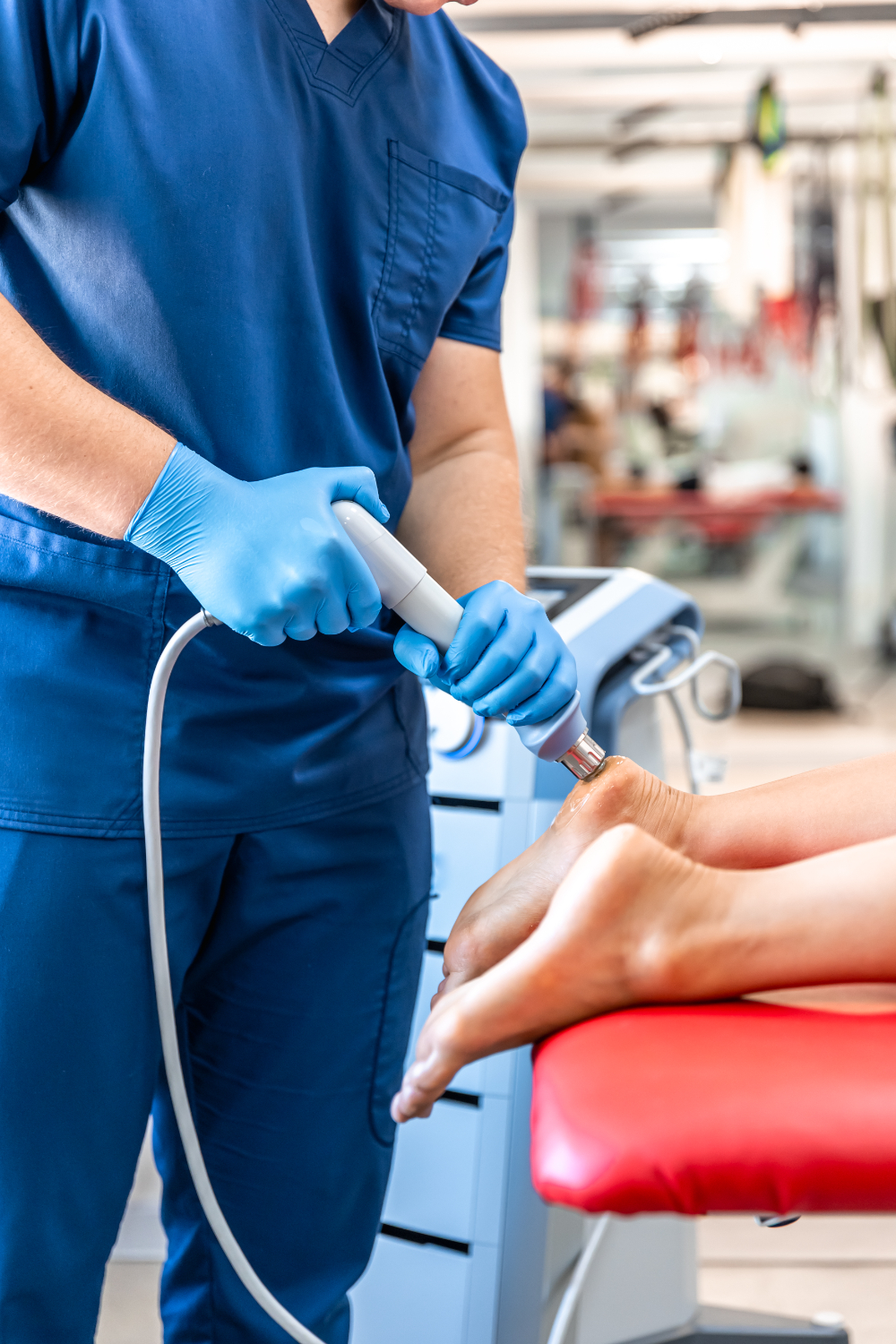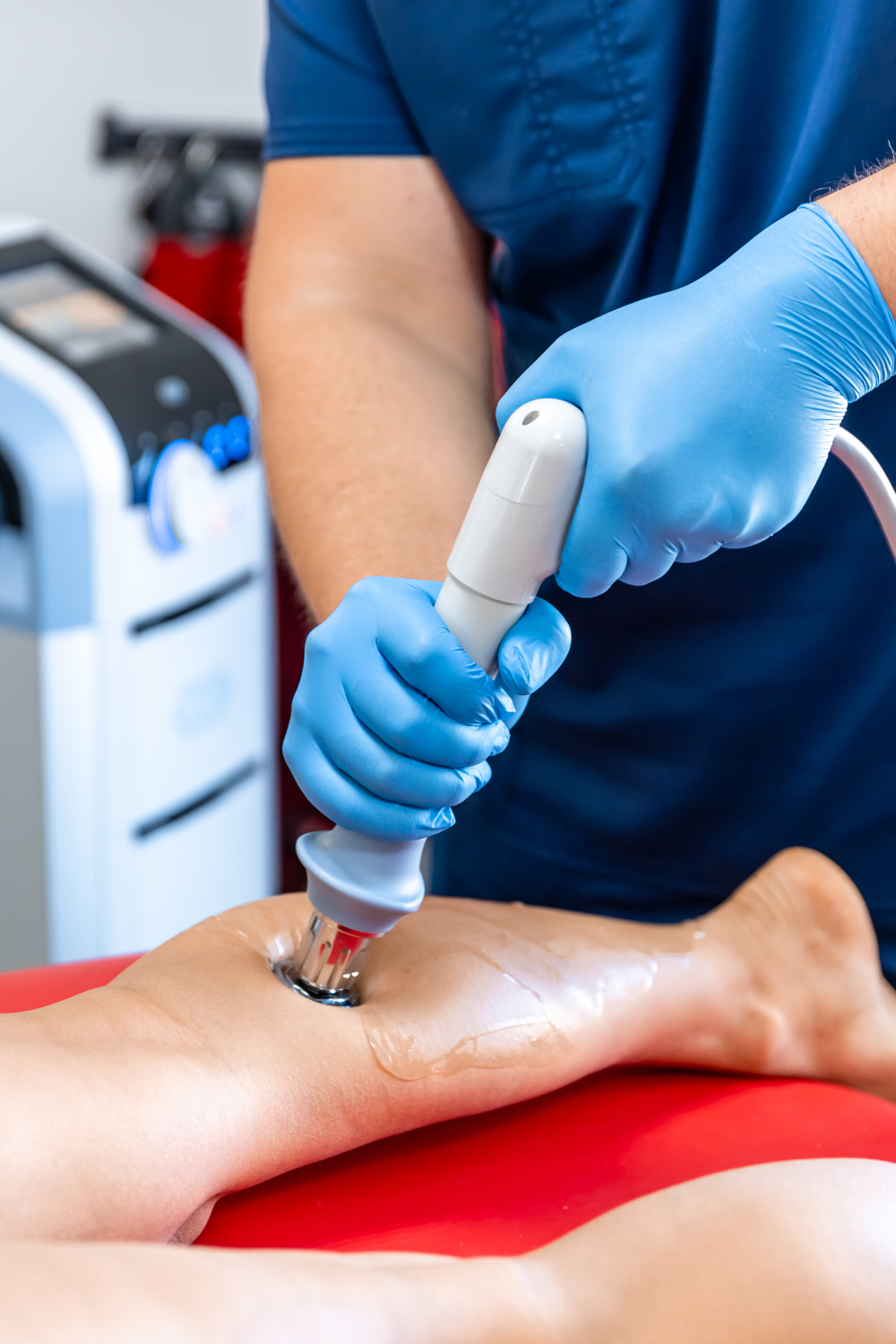Platelet-Rich Plasma (PRP) Therapy
Overview:
- Involves injecting a concentrated form of the patient’s own platelets to promote healing.
- Platelets contain growth factors and proteins that stimulate tissue repair and reduce inflammation.

Procedure:
- Blood is drawn from the patient and spun in a centrifuge to separate platelets.
- The concentrated platelets are injected into the affected area under ultrasound guidance.
Advantages:
- Minimally invasive
- Utilizes the body’s natural healing mechanisms
- Short recovery time compared to surgery
Limitations:
- Effectiveness varies; results may take weeks to months.
- Typically not covered by insurance.
- May require multiple treatments for optimal results.
Procedure:
- Performed in an outpatient setting.
- A device delivers focused or radial shock waves to the affected area.
- Treatment lasts about 15-20 minutes, often requiring 3-5 sessions.
Advantages:
- Non-invasive
- No downtime for many cases
- Stimulates natural healing processes
Limitations:
- May cause mild discomfort during treatment.
- Results can take several weeks to appear.
- Not effective for all patients or conditions.
- May require multiple sessions.

Comparison of PRP and ESWT
| Feature | PRP Therapy | ESWT |
|---|---|---|
| Invasiveness | Minimally invasive (injection) | Non-invasive |
| Mechanism | Growth factors in platelets | Acoustic waves stimulating repair |
| Conditions Treated | Soft tissue injuries, arthritis | Tendinopathies, plantar fasciitis |
| Sessions Required | 1-3 (depending on response) | 3-5 sessions typically |
| Onset of Results | Weeks to months | Weeks |
| Insurance Coverage | Often not covered | Sometimes covered for certain uses |